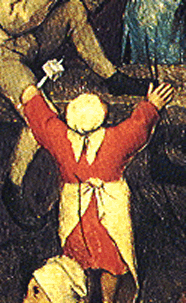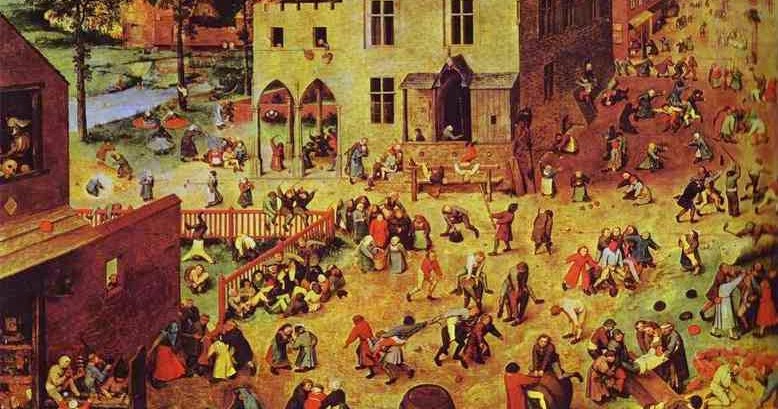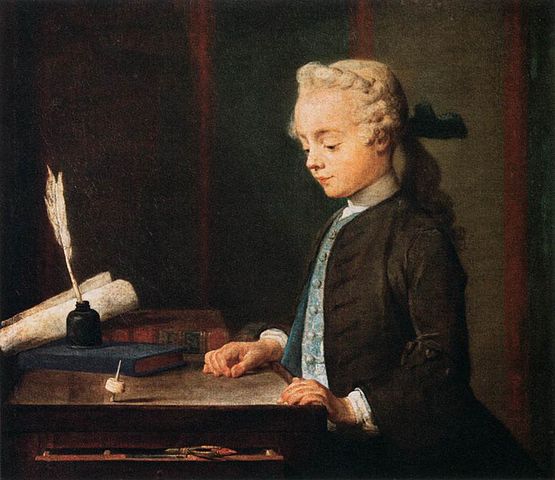We begin our newest blog series GAMING AND GAMBLING with one of the Trayn’d Bandes members, Elizabeth Willer discussing and explaining one of the oldest games in existence and even better…how to make your own.
Taking into account all the games that have ever existed in history, there are a few common elements that have persisted throughout the ages – playing cards, dice, coins, game boards & pawns – game components we know and love. But there’s one game piece you don’t see much today, which has only relatively recently disappeared from gaming tables: the teetotum.
The what?
The teetotum is a spinning top used in games of chance. It has a polygonal, or multi-flat-sided, body marked with letters or numbers that represent the game action to be taken. The earliest records date back to circa 100 BCE, and can be described as a cube-shaped, 6-sided die threaded onto a spindle. Ancient Roman teetotums had four sides, but most surviving examples of this popular game piece usually have 6 or 8 sides.

The common game played with the teetotum is called Put and Take. Players spin the teetotum, and the resulting face indicates how many coins or chips the player must put into the pot or take from the pot. If this sounds familiar, you’re right – the dreidel is a teetotum, and the dreidel game (traditionally played at Hanukkah) is one of many variants of Put and Take.
Typically, the markings on a teetotum would be a single letter, which stands for a word or action. It could also be a combination of a letter and a number, indicating how many pieces to put or take. In Latin, teetotums were marked with the letters A, D, N and T. In Latin, Aufer means “take”, Depone means “put down”, Nihil means “nothing” and Totum means “all” or the whole pot.
Common Put and Take layouts for 4-sided and 6-sided teetotums:
1 – Nothing happens
2 – Take All
3 – Take 1 (or Take Half, in the case of the dreidel)
4 – Put 1
1 – Everyone Put 1
2 – Take 1
3 – Put 1
4 – Take 2
5 – Put 2
6 – Take All
The teetotum can be seen in classic artwork:
Children’s Games by Pieter Bruegel the Elder, painted in 1560. (below)

Child with a Teetotum by Jean Siméon Chardin, painted in 1738. (below)

Teetotums have been made from all sorts of materials – wood, bone, ivory, metal, and plastic, and they have been inscribed with just about every language, showing just how popular and ubiquitous they’ve been. It’s possible that your favorite historical figure may have played with a teetotum – from Julius Caesar to Queen Elizabeth I to Alexander Hamilton. If you are a history nerd like me, you can see an archive of surviving examples here: http://www.antiquegamblingchips.com/putandtake.htm
Fast-forwarding to the late modern era, the original Game of Life (published in 1860 as The Checkered Game of Life) used a six-sided teetotum instead of dice. In the 20th Century, there was a huge craze for the game Put and Take in the 1920s and 1930s in the United States, even inspiring both a silent film and a Broadway show of the same name. And then, suddenly, there was a huge dropoff in popularity in the United States around the 1950s-1960s.
However, variants of the Put and Take game have remained popular in Spanish-speaking areas such as Colombia, Chile, Argentina and Mexico. In Spanish, a teetotum is called a pirinola, and the game is referred to as either Pirinola or Toma Todo (meaning “take all”).
While Put and Take can be used for actual gambling, it’s common to play it as a children’s game for small stakes (like pennies or candies). Put and Take is a zero-sum game, meaning that each player’s gain or loss is exactly balanced by the losses or gains of the other players. If the total gains of the participants are added up and the total losses are subtracted, they will equal zero. Otherwise colloquially known as, “I win, you lose.”
However, there’s nothing saying that a teetotum can only be used to play the game of Put and Take. Rather than “P1” and “T1” markings, a teetotum can simply be marked with conventional dice pips. Or you could make a custom teetotum with other results. You could conceivably make a teetotum to replace any custom die in any game (Takenoko comes to mind).
- How would you modify the rules of Put and Take to improve the game?
- What games do you already own that could be played by replacing dice or spinners with your own homemade teetotum?
- What kind of new game could you invent with a teetotum?
- Both Teetotums and dice have co-existed for thousands of years. Which do you prefer and why?
You can make your own teetotum at home as a craft project. If you don’t already have a hobby in woodcarving, metal casting, or resin casting, here are some easy ways you can build one:
Cardboard:
Draw a hexagonal figure on cardboard, heavy cardstock, or posterboard. Draw six pie-shaped sections inside the figure (so it looks like an umbrella). Color or paint it as desired, and write each “result” in the 6 different sections. Carefully cut out the hexagon, then poke a toothpick or pencil through the center to spin it.
Clay
Use an air-drying clay or a polymer clay that you can dry in your oven. (Follow the manufacturer’s instructions.) Form the clay into a multi-sided dreidel shape with a tapered bottom. Carve your “results” into each side with a toothpick or paint them on after the teetotum dries. Form the entire teetotum out of clay if you are putting it in the oven. If you are using air-drying clay, feel free to use a toothpick, pencil, dowel, or sucker stick for the handle.
3D Printing
If you have access to a 3D printer, here’s a Put and Take top file at Thingverse:
https://www.thingiverse.com/thing:1948333
Come back for our next installment of GAMBLING AND GAMING where we talk through the popular game NINE MEN’S MORRIS. Until then, roll the dice and have some fun. Happy Gaming!


